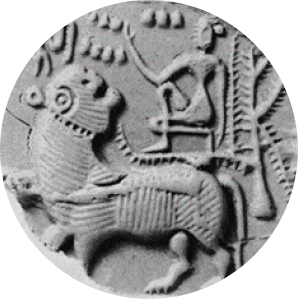I am pleased with the transition I made from Windows to MX Linux on my Lenovo Thinkpad T470p. It’s a beautiful machine, but much better now that I no longer have to use Windows 10 in it. I am back in the operating environment that I know and love and don’t need to make any compromises. I have used MX Linux previously, on lower-powered and older machines, but although I know that I could easily run a fancier distro under my 32 GB RAM, I wanted something that I already knew would be stable and that I would probably stay with. Initially I tried installing MX with the Gnome 3 and KDE Plasma desktops, then reinstalled and tried Budgie. I liked Budgie best, but it’s a bit buggy, so I’ve gone back to XFCE. This is not to say that there is anything wrong with any of the others, but XFCE is the desktop that MX Linux comes with, and MX seems to play best with it.
Regarding software, as usual, I have added the tools that I use: Cherrytree Notes, Bluefish, Filezilla, KeepassXC, Osmo, Scribus, Calibre, for now. All of these are multi-platform and available also for Windows, so even for the few months I was working under Windows, I was able to use almost exclusively free open source software.
I installed XnView as a photo manager, but then I had a pleasant surprise when I found that GThumb has grown into a program that can handle most of my everyday needs, such as cropping, resizing, color correcting. Last time I checked, this was not so, and I’ve reluctantly used XnView for years since. Though it is free, and very nice, it is still proprietary software. On Windows there is FastStone, which is under a GPL3 license.
For my cloud needs, I have NextCloud for personal files. This works fine (though it doesn’t start up automatically, for some reason). For the office, I unfortunately have to use Google Drive. Here there is a problem, because Google provide no native system for synchronization on Linux. (They initially promised, and people have been screaming at them for years in the Google forums, but it hasn’t helped – it just ain’t gonna happen.) I tried to use the Gnome 3 and KDE Google Drive solutions (which was the reason for my mentioned experimentation with these desktop environments). The verdict: Gnome’s Online Accounts is still too slow to be of much use. KDE’s Google Drive synchronization is currently disallowed from authenticating by Google. I tried next to use a proprietary solution, Expandrive, because it is supposed to work like Google Drive File Stream. But, for Linux at least, this is completely Beta software (and expensive). I had an email from the developer, but he didn’t reply to my feedback. So I’m using InSync, but just for a single folder where I keep some active files. My hard drive is not large enough to contain all of the files we have on our Google Drive, and previously Insync somehow made a horrible mess, mixing some of our personal home documents in public folders – it took hours and hours to correct the mess and I don’t want to go there again.
Regarding support under Linux for the Thinkpad T470p, as far as I can see, everything is supported, almost out of the box. For battery management, there is a specific external module for the TPL battery management system that I needed to add (acpi-call-dkms). This keeps the battery charged up to a certain threshold in order to help preserve the life of the battery. The machine still seems to drain the battery more quickly than under Windows, however.
The only thing that I have not yet installed is the drivers for the finger print reader.
The trackpoint
I once before owned a very cheap Thinkpad, on which I also replaced the Windows system with Linux, but I never really got the hang of using the trackpoint. Now I’ve decided to try to get used to it. I have always hated touchpads, and usually the first thing I do is disable them and use an external trackball (which I much prefer to mice). I suspect that I’m less dexterous than most people and always look with admiration when I see people effortlessly using their touchpads. It could be age, but I remember how even in primary school the teachers would tell me I was holding the pencil too heavily.
But the trackpoint is something special. There’s no way to accidentally create havoc with it, as I always do with with touchpads. Still, getting accustomed to the trackpoint is no easy task, though I do recognize the advantages. The experience reminds me of when I first began using a mouse, after working for years with WordPerfect under DOS. It felt really strange. But there’s something about the trackpoint that brings me closer to the machine, and encourages me to use keyboard functions more. For example, in LibreOffice, to select a large block of text that spans more than a page, I would normally use the mouse (or trackball), but trying to accomplish that with the trackpoint is simply horrible. So I looked up how to do use the keyboard instead and gasped how easy it is (you simply hold down the shift key while moving the arrow buttons – doh – I bet everyone else already knew that). Giving up external pointing devices is quite liberating. No doubt those who work completely in Vim or Emacs, and don’t need to use any pointing device whatsoever, feel this even more strongly. Having used a pointing device consistently for about 25 years, I’ve simply forgotten how it felt beforehand.
